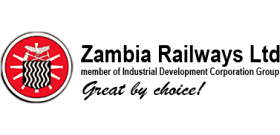 Zambia Railways Poised for Major Revival with EU-Backed Ndola-Kapiri Mposhi Line Upgrades
Zambia Railways Poised for Major Revival with EU-Backed Ndola-Kapiri Mposhi Line Upgrades
Zambia Railways is on the cusp of a significant transformation as advanced talks with the European Union and the Zambian government aim to secure crucial funding for the rehabilitation of the vital railway line connecting Ndola in the Copperbelt to Kapiri Mposhi, a key transport hub. This corridor is not only central to Zambia’s domestic freight network but also serves as the gateway to the Tanzania-Zambia Railway (TAZARA), linking Zambia to the port of Dar es Salaam and international markets.
According to Zambia Railways Managing Director, Cuthbert Malindi, negotiations are expected to conclude soon, with plans to commence repairs in early 2026. The EU is anticipated to contribute between 50 and 60 million Euros toward this critical infrastructure upgrade, underscoring the importance of international partnerships in revitalizing Africa’s rail networks.
This project represents the first phase of a broader rehabilitation strategy. The subsequent phase will focus on restoring the main railway artery stretching from Livingstone, near the Zimbabwe border, through to Chililabombwe on the Copperbelt, adjacent to the Democratic Republic of Congo. Together, these lines form the backbone of Zambia’s rail freight system, essential for transporting bulk commodities, especially copper.
Malindi expressed cautious optimism about the future, highlighting strong government backing under President Hakainde Hichilema, who took office in 2021. The government’s commitment to infrastructure investment is seen as a pivotal factor in the railway’s revival. However, Malindi also emphasized that Zambia Railways requires approximately US\$450 million to fully modernize operations, including acquiring new locomotives and wagons alongside track repairs.
Currently, Zambia Railways faces significant operational challenges. The company operates with only six locomotives—two owned and four leased—far short of the estimated 20 to 32 needed for optimal service. Rolling stock is similarly constrained, with just 875 wagons in use against a requirement of about 2,500. This shortage severely limits the railway’s capacity to meet market demand and capitalize on freight opportunities.
Compounding these issues is the deteriorated state of the rail infrastructure. Years of underinvestment have forced speed restrictions to a mere 20 kilometres per hour, well below the ideal 50 to 70 km/h range. This slowdown not only reduces efficiency but also raises costs and undermines the railway’s competitiveness against road transport.
Passenger services on the Chililabombwe–Livingstone route are minimal, with only two trains running weekly. Malindi acknowledged that these services are maintained more as a social responsibility than a profitable enterprise. In contrast, freight operations, particularly bulk cargo transport, hold greater promise for revenue generation and long-term sustainability.
One of the railway’s unique strengths lies in its role within Zambia’s copper industry, a sector targeted to produce three million metric tonnes annually over the next decade. By law, at least 30% of all bulk cargo must be transported by rail, translating to roughly 22 million metric tonnes of domestic freight and an additional 10 million tonnes of exports each year. Despite this, Zambia Railways’ current capacity stands at just six million tonnes, highlighting a significant gap between potential and actual throughput.
Malindi stressed that the existing infrastructure can support higher volumes, but the primary bottleneck is the lack of sufficient rolling stock. To address this, Zambia Railways plans to lease an additional 10 locomotives within the next six months, aiming to increase its operational fleet to nearly 30 units. This expansion is expected to enhance service reliability and capacity, enabling the railway to better serve both domestic and export markets.
To secure the necessary capital and expertise, Zambia Railways has launched a comprehensive strategic business plan covering 2024 to 2028. The plan focuses on recapitalization and operational efficiency, with ongoing funding discussions involving the European Union, the African Development Bank, and the Development Bank of Southern Africa. Additionally, the company is actively pursuing private-sector partnerships to leverage investment and improve service delivery.
One successful example of such collaboration is the Ndola–Sakania railway, which connects to the Democratic Republic of Congo border and currently stands as Zambia Railways’ most profitable route. This partnership model offers a blueprint for expanding private involvement in rail operations, potentially accelerating modernization and boosting financial sustainability.
For the broader African transport and logistics sectors, Zambia Railways’ revival is a critical development. Efficient rail infrastructure is essential for reducing transport costs, improving supply chain reliability, and supporting the continent’s mineral export economies. As Zambia moves to strengthen its rail network, travel and freight professionals should anticipate enhanced connectivity and new opportunities for regional trade facilitation.
Ultimately, the rehabilitation of Zambia’s railways reflects a growing continental trend toward revitalizing aging infrastructure through strategic partnerships and international cooperation. This approach not only supports economic growth but also aligns with Africa’s ambitions for integrated transport corridors and sustainable development.
